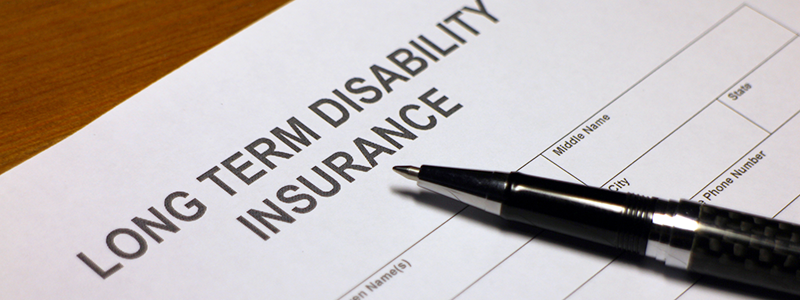You’re injured and looking for long term disability insurance coverage.
You’ve requested a copy of the LTD policy and summary plan from your employer.
You begin reading but are having a hard time understanding the pages and pages of legal jargon, set deadlines and list of exemptions.
Reading through your long term disability policy can be an overwhelming process, but we want to make it easier for you. It’s extremely important in this process that you take time to carefully read each section, making sure you have an educated understanding of how everything works.
If you’ve suffered an accident that has impaired you from continuing to work, you deserve to keep collecting a source of income. Long term disability insurance can aid you in getting up to 50%-80% of your prior earnings.
We’ve put together a list of the most essential parts of your long term disability policy that you need to understand to move forward in this process.

The Definition Of Disability
Every policy has a different view of the definition of disability. This is what qualifies you to be considered a “disabled” person. This is the most important piece of knowledge to understand in reading your long term disability policy. The underlying definition is the guidelines that you must match in order to seek the money you deserve for your losses.
In general terms, the definition of disability is broken up into two overarching categories: own occupation, and any occupation.
Own Occupation
Any person that is categorized under own occupation must be unable to carry out the duties of their own job. This definition of disability labels the person as “totally disabled” and unfit for work. They cannot perform the duties they were once completing on a day-to-day basis prior to their accident to place.
For the most part, long term disability policies provide benefits under an “own occupation” clause in the first two years of one’s disability, then switch to “any occupation”
Any Occupation
Claims filed under any occupation, typically deal with your analysis of employability. This category is more extensive and takes into consideration your education level, work history and previous salaries and wages.
If the analysis rules that you are able to work part time, then this the grounds for deny claims , making you not viewed as “totally disabled” under the any occupation standards.
Any occupation often includes the work “gainful” in its language. The definition of “gainful occupation” to most is that you are provided a career that allows you to make an income equal to at least 60% of your expected monthly earnings.

Exclusions and Limitations
Now that you’ve gotten an in-depth look as to what constitutes the different definitions of disability, it’s time to take an even deeper look as to the pivotal exclusions and limitations involved.
Mental Health
Understanding mental health when it comes to filing for a long term disability claim is extremely important. Most mental health disorders only receive benefits up to 24 months.
Schizophrenia and Organic Brain Disease are the exemptions. Their benefits can be extended for a longer duration of time.
Disabilities such as substance abuse or alcoholism are on the opposite ends of the spectrum and will only receive benefits for a short period of time, or not at all.
Pre-Existing Conditions
It’s important to understand that almost all policies have exemptions for your pre-existing conditions A pre-existing condition is any condition that you received medical attention for in the past 90 days.
The Waiting Period
This period of time is also known as the “elimination period.” This is where you are disabled but undergoing a wait because you are not entitled to long term disability benefits.
This wait time is usually 3-6 months, and usually falls in line with your short term disability benefits.
Length Of Benefits
Read your company’s summary plan and look for the duration of time they will provide benefits for. For example, some companies may pay you till your 65, while some have a fixed number of years.
Social Security Disability
Filing for Social Security Disability is oftentimes the next step to do after successfully receiving long term disability benefits.
Social Security Disability Insurance pays benefits to you and specified family members if you are insured. As long as you worked long enough and paid Social Security taxes, then you are qualified.
As long as you worked long enough and paid Social Security taxes, then you are qualified.
Your company will take this into fact and pay you less in long term disability benefits, depending on how much Social Security benefits you receive.
Taxes
The taxability of your long term disability benefits play a huge role in how much money you are getting. It’s important to thoroughly read to figure out if your premiums are payable to you before or after tax dollars.
Premiums paid before taxes will be taxed as general income. Premiums paid after tax will generally be tax free.

Additional Points
You’ve read through the exclusions and limitations to watch out for. Here are some general points to take into consideration:
Ask questions and confirm answers.
Ensure your employer reports and salary increases.
Make sure you can afford to pay the premiums.
Remember that this process is time consuming.
Ask loved ones for help.
Seek legal advice
Conte Jaswal Can Help
We understand that reading through your long term disability policy is a difficult document to understand.
Still need help? Book a free, no-obligation consultation with us to discuss your options.
Accidents happen, but we can help you get the compensation you need to recover.
Contact Conte Jaswal now to start getting your life back on track!






